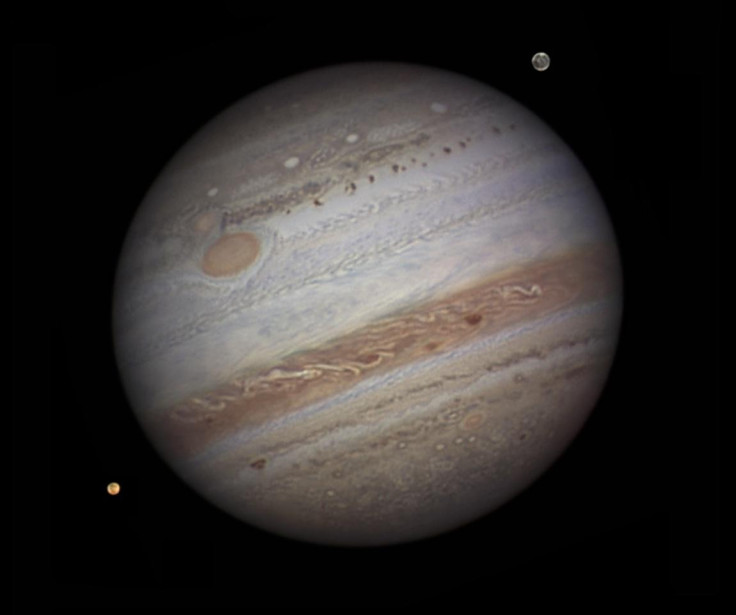Jupiter and Mars conjunction: Earth's planetary siblings coming together for rare celestial reunion
The spectacular event can be viewed with the naked eye and there is no need for a telescope.

After the biggest supermoon of 2018, Earth's planetary siblings, Jupiter and Mars, will make a glaring appearance as part of a rare celestial conjunction.
The planets will appear together in the early hours of Sunday (7 January, 3:40am in the UK) and shine brighter than normal in the southern night sky, the Independent reports.
Though separated by several hundred million miles in the cosmos, the two planets will appear to come extremely close for a relatively short period.
The duo will form a straight line, with Jupiter above and Mars underneath but slowly that line will turn diagonal as they continue with their respective orbital routines – Jupiter moving to the left and Mars to the right.
The event will last for about five hours but for best views, the 6-7am local time slot would be the best. During this time, the planetary duo will appear 20 degrees above the horizon, offering picture-perfect views to sky-gazers, Royal Observatory astronomer Tom Kerss told The Independent.
"They should remain clearly visible even as the dawn twilight begins to emerge," he added. Sky-watchers should pick an open spot with few buildings and minimum light pollution for stunning views.
Viewers do not need any kind of telescope to view the conjunction. The planets will appear super bright to the naked eye and will not be mistaken for common stars due to their colours. Mars will sport an orange hue, while Jupiter will appear as a pale yellow-white star and will be 20 times brighter than normal.
"At just a fraction of a degree apart in the sky, you'll be able to cover both of them easily using the tip of your little finger on an outstretched arm," Kerss noted, highlighting the uniqueness of the celestial event.





















